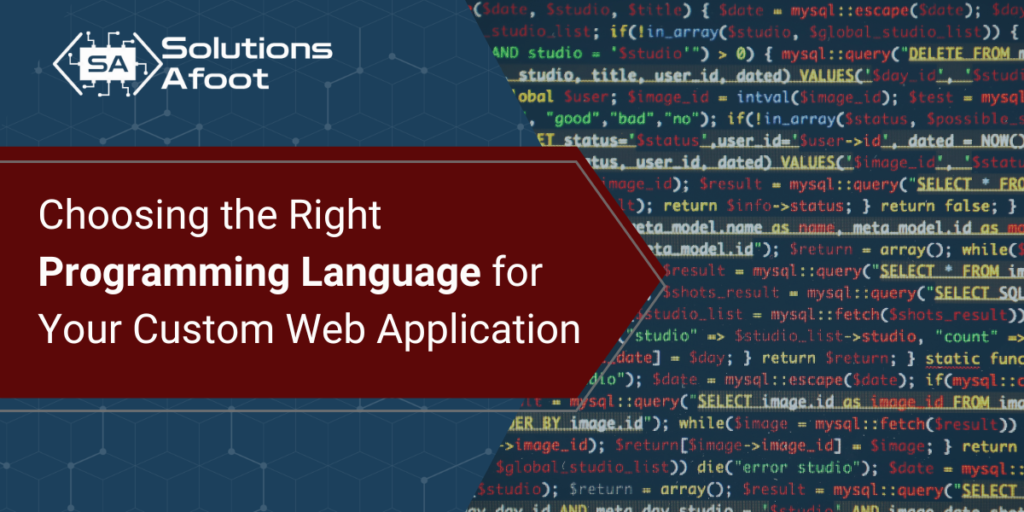Choosing the Right Programming Language for Your Custom Web Application

React, Python, & JavaScript: Choosing the Right Programming Language for Your Custom Web Application
In today’s rapidly evolving digital landscape, choosing the right programming language for your custom web application is crucial to your project’s success. With so many options available, it can be challenging to decide which language will best meet your needs. This article explores three of the most popular technologies used in web development today: React, Python, and JavaScript. We will delve into their unique features, strengths, and weaknesses, and provide guidance on how to select the right one for your project. Additionally, we’ll discuss how these technologies can be integrated with Caspio’s low-code platform to optimize development efficiency.
Introduction to Each Programming Language and Its Unique Features
React
React is a JavaScript library developed by Facebook for building user interfaces. It is particularly well-suited for creating dynamic and interactive web applications. React’s component-based architecture allows developers to build encapsulated components that manage their own state, making code more modular and reusable. One of React’s standout features is the Virtual DOM, which efficiently updates and renders components when the underlying data changes, resulting in faster performance.
Python
Python is a versatile, high-level programming language known for its readability and simplicity. It is widely used for web development, data analysis, artificial intelligence, and more. Python’s syntax is easy to learn, making it a popular choice for beginners and experienced developers alike. Its extensive standard library and thriving ecosystem of third-party packages enable rapid development and deployment of applications. In web development, Python frameworks such as Django and Flask provide robust tools for building scalable and secure web applications.
JavaScript
JavaScript is a dynamic, high-level programming language that is an essential part of the web development trifecta, alongside HTML and CSS. Originally developed for adding interactive elements to websites, JavaScript has evolved into a full-fledged programming language that can run on both the client-side and server-side (with environments like Node.js). JavaScript’s versatility, extensive community support, and continuous evolution make it a cornerstone of modern web development.
Comparison of the Languages in Terms of Performance, Scalability, and Community Support
Performance
- React: Being a front-end library, React is primarily focused on rendering user interfaces efficiently. The Virtual DOM minimizes expensive DOM manipulations, which enhances performance, especially in applications with high interactivity.
- Python: Python is an interpreted language, which generally makes it slower than compiled languages like C++. However, for web development, where response time is more critical than raw execution speed, Python’s performance is often more than adequate. Python’s frameworks are optimized for performance, making it a viable option for web applications.
- JavaScript: JavaScript is executed in the browser, making it an excellent choice for client-side scripting. With the advent of Node.js, JavaScript has also become a powerful server-side language. Its asynchronous nature allows for non-blocking operations, enhancing performance in I/O-heavy applications.
Scalability
- React: React’s component-based architecture facilitates the development of scalable web applications. Components can be reused and nested, making it easier to manage and scale large applications.
- Python: Python’s scalability is largely dependent on the framework being used. Django, for example, is known for its “batteries-included” approach, providing everything needed to build large, scalable applications. Python’s readability and simplicity also contribute to its scalability, as code is easier to maintain and extend.
- JavaScript: JavaScript’s scalability has improved significantly with frameworks like React and Angular on the front end and Node.js on the back end. Its ability to handle asynchronous operations efficiently makes it suitable for large-scale, real-time applications.
Community Support
- React: React has a massive community of developers, backed by Facebook, which ensures continuous updates and a wealth of resources, tutorials, and third-party libraries.
- Python: Python boasts one of the largest and most active communities in programming. This results in extensive documentation, a plethora of libraries and frameworks, and a supportive community that contributes to its ongoing development.
- JavaScript: JavaScript has an enormous developer base and is one of the most commonly used languages globally. Its extensive community support has led to the development of numerous frameworks, libraries, and tools that enhance its capabilities.
Use Cases for React, Python, and JavaScript in Web App Development
React is ideal for building dynamic, high-performance user interfaces. It’s commonly used in applications that require frequent updates to the UI based on user interactions, such as social media platforms, e-commerce sites, and dashboards.
Python shines in data-driven applications, backend development, and situations requiring rapid development cycles. It is frequently used in web applications that need robust server-side logic, such as content management systems (CMS), e-commerce platforms, and APIs.
JavaScript is indispensable for adding interactive elements to websites. It is used for building full-stack applications, especially in environments like Node.js, which allow developers to use JavaScript for both client-side and server-side development. It’s particularly useful for developing real-time applications such as chat apps, online gaming platforms, and collaborative tools.
Integration with Caspio: How These Languages Complement a Low-Code Approach
Caspio’s low-code platform allows developers to build powerful applications without needing to write extensive amounts of code. However, integrating traditional programming languages with Caspio can significantly enhance the functionality and customization of web applications.
React: Developers can use React to build complex user interfaces that integrate seamlessly with Caspio’s backend services. By using Caspio for data management and React for the front end, developers can create highly interactive and data-driven applications.
Python: Python can be integrated with Caspio to handle backend processes and complex logic that might be too specific for a low-code platform. For example, Python scripts can be used for data analysis, machine learning, and automation tasks, while Caspio manages the application’s core functionalities.
JavaScript: JavaScript can be used in conjunction with Caspio for client-side scripting and enhancing user experiences. With Node.js, JavaScript can also manage server-side tasks, providing a consistent language across the entire application stack.
Recommendations for Choosing the Right Language Based on Project Goals
Choosing the right programming language depends on several factors, including the specific needs of your project, your team’s expertise, and the scalability and performance requirements of your application.
Use React if your primary goal is to build a highly interactive, responsive user interface. React’s modularity and reusability make it an excellent choice for projects where user experience is paramount.
Choose Python for projects that require robust server-side functionality, data manipulation, or rapid development cycles. Python’s readability and extensive libraries make it ideal for applications that need to process large amounts of data or have complex backend logic.
Opt for JavaScript when you need a versatile language that can handle both client-side and server-side development. JavaScript is especially beneficial for real-time applications and full-stack development, providing a unified development experience.
Conclusion
React, Python, and JavaScript each bring unique strengths to the table in web application development. By understanding the features, benefits, and ideal use cases of each, you can make an informed decision that aligns with your project goals. Additionally, integrating these technologies with a low-code platform like Caspio can maximize development efficiency, enabling you to build robust, scalable applications with less code and reduced time to market.
No matter what your project requires, Solutions Afoot is here to help you navigate the complexities of web development. Contact us today to learn how we can help you choose the right tools and technologies to bring your vision to life!
